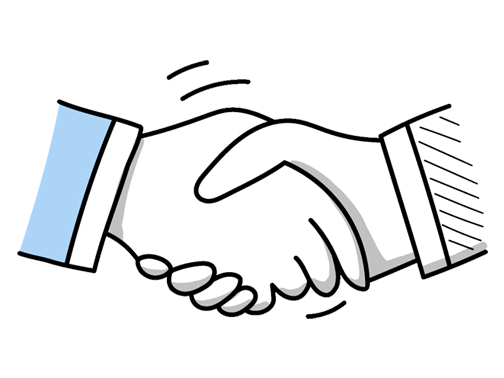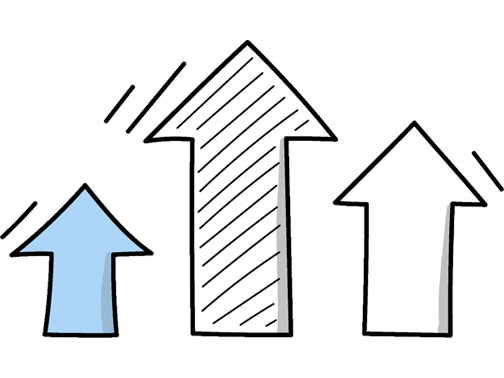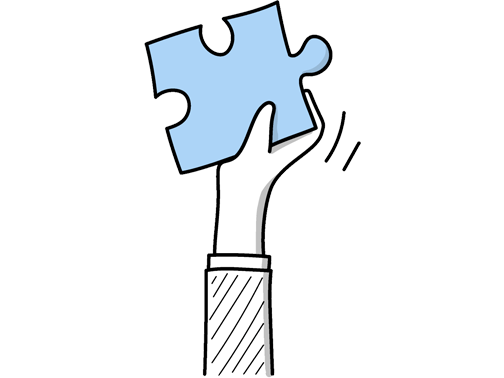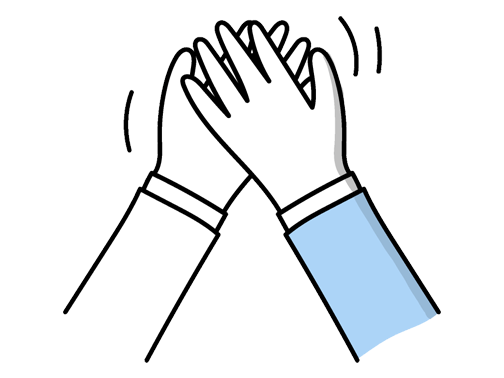Steel Erector Supervisor Interview Questions (2025 Guide)
Find out common Steel Erector Supervisor questions, how to answer, and tips for your next job interview
Practice Interviews Online - Identify your strengths and weakness in a realistic Steel Erector Supervisor mock interview, under 10 minutes
Practice Now »Steel Erector Supervisor Interview Questions
Questions like this assess your leadership skills and ability to balance productivity with safety and quality on site. You need to explain that you motivate your team through clear communication, setting expectations, and leading by example while managing tasks efficiently and addressing issues promptly.
Example: I focus on clear communication and understanding individual strengths, making sure everyone knows their role and feels valued. Regular check-ins help address challenges early, while recognising good work keeps morale high. For example, on a recent project, I organised brief daily huddles to align the team, which boosted both efficiency and attention to detail. Creating a supportive environment drives the team to deliver quality consistently.
Hiring managers ask this question to see how well you handle high-pressure situations and make safe, effective decisions quickly on site. You need to describe a specific instance where you identified a risk, made a fast decision to address it, and achieved a positive result like preventing an accident or avoiding delays.
Example: During a project, one of the main steel beams arrived damaged just as we were about to install it. I quickly assessed the situation, consulted the team, and decided to reorder the beam while rearranging the schedule to work on other sections. This kept the project on track and avoided costly downtime. The team appreciated the clear direction, and we met the deadline without compromising safety or quality.
What they want to know is how you effectively support your team’s growth and ensure safety and quality standards through evaluations. You need to say that you give clear, specific feedback with measurable goals and maintain open communication to help your team improve and meet project expectations.
Example: When it comes to evaluating my team, I focus on having honest, straightforward conversations. I set clear targets we can all track and regularly check progress together. I encourage everyone to share their thoughts too—it helps identify areas for growth and keeps us aligned. For example, during a recent project, one team member struggled with timing, so we agreed on smaller deadlines, which really helped improve their workflow.
This interview question assesses your problem-solving skills and technical knowledge in ensuring structural integrity. You need to explain that you first inspect the alignment or connections carefully, identify the root cause, then communicate clearly with your team to implement adjustments or repairs safely and efficiently.
Example: When facing alignment or connection issues, I first review the drawings and on-site measurements to identify discrepancies. I collaborate with the team to assess possible causes and adjust accordingly, ensuring safety and precision. For example, on a recent project, we noticed a misaligned beam and resolved it by recalibrating the supporting framework, which kept the schedule on track without compromising quality.
This interview question aims to assess your leadership skills and experience managing a team in a steel erection project. In your answer, clearly describe the project, your supervisory role, and your main responsibilities like overseeing safety, coordinating tasks, and ensuring timely completion.
Example: Certainly. On a recent project erecting steel frameworks for a commercial building, I supervised a team of eight. My role involved coordinating daily tasks, ensuring safety standards were met, and liaising with engineers to keep the work aligned with design specs. I also handled scheduling challenges and supported the team to maintain steady progress despite tight deadlines. It was rewarding to see the structure take shape under our combined efforts.
Interviewers ask this question to see if you can effectively plan, organize, and communicate project details using relevant tools. You need to mention the specific software you use, like MS Project or Primavera, explain how it helps manage resources and timelines, and highlight how you use its reporting features to keep everyone informed.
Example: In my experience, I use software like MS Project and Procore to plan and track steel erection timelines and resources efficiently. These tools help me allocate teams and equipment effectively while monitoring progress in real time. They also simplify generating reports and keeping communication clear with all stakeholders, ensuring everyone stays updated throughout the project. This approach helps maintain smooth operations and timely delivery.
What they want to know is how you actively spot and handle risks to keep the project safe and on track. You need to say you conduct regular site inspections to find hazards, develop clear safety protocols, and engage the team through toolbox talks to address risks together.
Example: To manage risks on a project, I start by thoroughly reviewing plans and site conditions to spot potential issues early. I involve the team in regular briefings to share observations and concerns. For example, on one site, we spotted a lifting hazard during setup and quickly adjusted the sequence to keep everyone safe. This hands-on approach helps us address problems before they escalate, keeping the project on track and the team protected.
Hiring managers ask this question to assess your knowledge of safety protocols and your ability to enforce them on site, which is critical to preventing accidents and ensuring team well-being. You need to clearly list essential PPE like hard hats, safety harnesses, gloves, steel-toe boots, and eye protection, then explain how you enforce their use through regular safety briefings, site inspections, and by setting a strong example to maintain a safe work environment.
Example: For steel erection, key PPE includes hard hats, safety glasses, high-visibility vests, gloves, steel-toe boots, and fall protection harnesses. I encourage regular toolbox talks and lead by example to reinforce wearing PPE. When everyone sees the importance firsthand—like preventing serious injuries—the whole team stays safer and the project runs smoother. Consistent use of PPE isn’t just a rule; it’s about protecting each other every day.
Interviewers ask this question to see how you handle unexpected issues and lead your team under pressure. You need to clearly describe the problem, explain the actions you took to solve it, and highlight the positive results that came from your solution.
Example: On one project, we faced delays because some steel components arrived late and out of sequence. I reviewed the schedule, coordinated with suppliers, and reorganized the workflow to focus on tasks that could proceed without those parts. This kept the team productive and reduced downtime. As a result, we managed to stay on track and meet the deadline without compromising safety or quality.
What they want to know is that you understand how accurate load calculations ensure safety and structural integrity during steel erection. You need to explain how you determine steel weights and their distribution, recognize the risks of miscalculations, and emphasize your role in working with engineers to verify load data before proceeding.
Example: Load calculations are critical because they ensure every steel component can safely support the weight during assembly and once in place. Misjudging these loads risks structural failure or accidents on site. It’s important to work closely with engineers and the team to share accurate data, so everyone understands the limits and plans accordingly. For example, knowing the exact weight helps when choosing cranes and rigging equipment to keep the operation smooth and safe.
Interviewers ask this to gauge your practical experience and the variety of projects you've handled, ensuring you can manage different challenges on site. You need to clearly state your total years in steel erection and briefly describe the kinds of projects, like commercial buildings or bridges, to show your breadth of experience.
Example: I’ve spent over eight years working in steel erection, supervising a range of projects from commercial buildings to large-scale infrastructure like bridges and industrial facilities. Each project has helped me develop strong leadership skills and a keen eye for safety and quality, ensuring structures are assembled efficiently and correctly. This hands-on experience has been invaluable in managing teams and delivering projects on schedule.
This interview question helps assess your commitment to workplace safety and your ability to effectively communicate safety procedures. You need to explain that you regularly organize clear, hands-on training sessions and drills, ensuring all team members understand and follow safety protocols.
Example: I start by understanding the team's experience and focusing on practical safety measures relevant to daily tasks. We hold regular briefings where I encourage questions and share real-life scenarios, like safe rigging or emergency stops. I also organise drills that mimic possible on-site situations, ensuring everyone knows their role. This approach keeps safety top of mind without feeling like a checklist, making it easier for the team to stay alert and confident.
Interviewers ask this question to see if you understand the equipment needed for safe and efficient steel erection and how you decide what fits each job. You need to mention common cranes like tower cranes for height, mobile cranes for flexibility, and forklifts for smaller loads, then explain that you choose based on factors like the weight, size, and reach required, always assessing load capacity and site conditions to ensure safety.
Example: In steel erection, we often use mobile cranes, tower cranes, and sometimes crawler cranes, depending on the site layout. The choice depends on factors like load weight, lift height, ground conditions, and space constraints. For example, a tower crane suits tight urban sites, while a mobile crane is ideal for more open areas. It’s crucial to assess these elements carefully to ensure lifts are both safe and efficient on every project.
This question helps the interviewer assess your qualifications and commitment to safety in steel erection. You need to clearly mention any relevant certifications, like OSHA safety training or rigging licenses, and highlight your ongoing safety education.
Example: I have completed the CSCS card for site safety, along with training in working at height and manual handling, which are essential in steel erection. I’ve also gone through specific steelwork and welding awareness courses. These have helped me ensure tasks are done safely and efficiently, especially when coordinating teams under tight deadlines. For example, on one project, my safety training allowed me to identify and fix potential hazards before work began.
Interviewers ask this to see if you understand the importance of precision and safety in steel erection. You need to explain that you regularly verify measurements using tools like levels and plumb bobs, and conduct thorough inspections to confirm all connections meet specifications.
Example: To ensure steel alignment and connections are accurate, I rely on thorough planning and clear communication with the team. We double-check measurements on site using levels and plumb lines, and I make sure any discrepancies are addressed immediately. For example, on a recent project, spotting a slight misalignment early helped us adjust before welding, saving time and preventing costly rework. Keeping a close eye during each step is key.
This question helps the interviewer assess your ability to oversee multiple teams and ensure smooth collaboration on site. You need to explain how you communicate clearly, set expectations, and resolve conflicts to keep the project on schedule.
Example: In my previous roles, I’ve worked closely with subcontractors to keep projects running smoothly, ensuring clear communication and timely deliveries. Coordinating with other trades, like electricians and plumbers, has been key—on one site, aligning schedules prevented delays and improved safety. I focus on building strong, respectful relationships to solve issues quickly and keep everyone's work aligned with the overall plan.
This question assesses your understanding of critical safety regulations and your ability to actively enforce them to protect your team. You need to explain your knowledge of OSHA standards specific to steel erection, describe how you regularly implement and monitor safety protocols, and highlight how you foster a culture of safety and accountability among your crew.
Example: In my role, I stay well-informed about OSHA and industry safety standards, ensuring they’re part of our daily routine. I lead by example, holding toolbox talks and regular site checks to spot hazards early. Encouraging open communication lets the team feel responsible for everyone’s safety. For example, when we noticed a rising risk with rigging, we quickly updated procedures and reinforced training, which significantly reduced near misses.
This question is designed to show your leadership and problem-solving skills in managing team dynamics. You need to explain how you recognized the conflict’s cause, what actions you took to mediate it, and the positive result that improved team cooperation.
Example: On a project, two team members disagreed over the sequence of steel assembly, causing delays. I spoke with each individually to understand their concerns, then brought them together to find common ground. By encouraging open communication and focusing on the project's goals, we reached a compromise that improved workflow. This experience reinforced the importance of listening and addressing issues early to keep the team moving forward smoothly.
This question assesses your problem-solving skills and adaptability in managing projects efficiently. You need to explain how you assess the situation quickly, communicate with your team, and adjust plans to keep the project on track despite changes.
Example: When delays or changes pop up, I stay calm and quickly reassess the situation. I communicate with the team and contractors to understand the impact and adjust the schedule if needed. In a recent project, a late steel delivery meant reshuffling tasks to keep other work moving, which kept us mostly on track without compromising safety or quality. Staying flexible and keeping everyone informed is key.
Hiring managers ask this question to ensure you can proactively identify hazards and enforce safety measures that protect the team from falls and accidents. You need to explain how you conduct regular site inspections, use proper fall protection equipment like harnesses and guardrails, and lead safety briefings to keep everyone informed and compliant.
Example: On site, I start by thoroughly spotting any risks, especially around edges or unstable platforms. We use secure harnesses and guardrails where needed, and maintain clear walkways to avoid trips. Regular safety briefings ensure everyone’s aware and accountable. I encourage the team to speak up if something feels unsafe—open communication helps us catch issues before they become accidents.
This question assesses your commitment to safety, quality, and continuous improvement in steel erection. You need to say that you regularly review industry publications, attend relevant training or workshops, and communicate updates with your team to ensure everyone follows current standards and best practices.
Example: I keep up with industry changes by regularly attending trade workshops and safety briefings, and staying connected with professional groups online. I also review updates from organisations like the British Constructional Steelwork Association. Sharing insights with colleagues on-site helps too, as real-world experience often highlights practical best practices that aren’t always in the manuals. This approach keeps me informed and ensures we work both safely and efficiently.
Questions like this assess your ability to prioritize safety and handle difficult situations effectively. You need to explain the violation clearly, describe how you addressed it promptly, and emphasize the steps you took to ensure the site remained safe for everyone.
Example: On one site, I noticed a worker not wearing the required harness near an edge. I calmly stopped him and explained the risk, then ensured he put the equipment on correctly. I took the opportunity to remind the whole team about our safety protocols during the next briefing. It’s important to address issues immediately and use them as teaching moments to keep everyone safe.
This question aims to assess your ability to manage projects efficiently by balancing time and costs through strategic planning and teamwork. You need to explain how you create detailed schedules with milestones, communicate regularly with your team and stakeholders, and anticipate risks by having backup plans ready.
Example: To keep projects on track and within budget, I focus on clear planning and setting priorities from the start. I stay in regular contact with the team and stakeholders to quickly address any issues. When challenges arise, I assess risks early and adapt solutions to avoid delays. For example, on a recent site, catching a supply delay early meant we rearranged tasks and avoided costly downtime.
Hiring managers ask this question to see if you understand the entire steel erection process, including planning, execution, and safety. You need to explain how you assess site conditions, outline the step-by-step assembly and securing of steel components, and highlight how you handle challenges while keeping safety a priority.
Example: Sure. Erecting steel structures starts with thorough planning—reviewing drawings, coordinating deliveries, and ensuring equipment is ready. On site, we follow a set sequence, assembling components safely and securely, often adjusting for unexpected issues like weather or space constraints. Throughout, I prioritise clear communication and strict safety checks to keep the team safe and the project on track. For example, when a crane broke down, we quickly reorganised tasks to minimise delays.
Interviewers ask this question to see how you build trust, teamwork, and a safe worksite. You should explain that you encourage open communication through regular meetings, recognize team achievements, and maintain safety standards while supporting staff growth.
Example: To create a positive work environment, I make sure everyone feels heard by keeping communication clear and open. I regularly acknowledge the efforts of the team, which helps build trust and motivation. Safety and quality are non-negotiable, so I lead by example and support my crew’s growth, ensuring they have the skills and confidence to do their best work. This approach has helped my teams stay productive and united on site.
Ace your next Steel Erector Supervisor interview with even more questions and answers
Common Interview Questions To Expect
The interviewer is looking for your motivation, passion, and understanding of the role. You can answer by discussing your relevant skills, experience, and how the role aligns with your career goals.
Example: I'm interested in this role because I have a strong background in steel erection and supervision, and I'm passionate about ensuring projects are completed safely and efficiently. This role aligns perfectly with my career goals of advancing in the construction industry and taking on more leadership responsibilities. I believe my skills and experience make me a great fit for this position.
The interviewer is looking for you to highlight your key skills, abilities, and qualities that make you a strong candidate for the position. Be sure to focus on strengths relevant to the job and provide specific examples to support your claims.
Example: My biggest strengths are my strong leadership skills, attention to detail, and ability to problem-solve quickly on the job. For example, in my previous role as a Steel Erector Supervisor, I successfully managed a team of workers to complete projects on time and within budget. I also have a keen eye for safety protocols and ensure that all work is done in compliance with regulations.
The interviewer is looking for how you handle criticism, your ability to reflect on feedback, and how you have used criticism to improve your work. You can answer by discussing a specific situation, your response, and the outcome.
Example: Sure! One time, a colleague pointed out that I was not double-checking the measurements before starting a project. I took their feedback seriously and started implementing a checklist to ensure accuracy. As a result, our team's efficiency improved, and we were able to complete projects more smoothly.
The interviewer is looking for your commitment to ongoing learning and growth in your field. You can answer by discussing courses, certifications, conferences, or other ways you plan to stay current in your industry.
Example: I plan to continue my professional development by attending relevant industry conferences and workshops to stay updated on the latest trends and technologies in steel erection. I also aim to pursue additional certifications in safety and project management to further enhance my skills and knowledge. Overall, my goal is to always be learning and improving in order to excel in my role as a Steel Erector Supervisor.
The interviewer is looking for examples of how you have successfully collaborated with others, communicated effectively, and resolved conflicts within a team setting. Be sure to highlight your teamwork skills and experiences.
Example: Sure! In my role as a Steel Erector Supervisor, I have worked closely with my team to ensure projects are completed on time and within budget. I have excellent communication skills which have helped me to effectively delegate tasks and resolve any conflicts that may arise. Overall, my experience working in a team has been positive and has allowed me to develop strong leadership skills.
Company Research Tips
The company's official website is a goldmine of information. Look for details about the company's history, mission, vision, and values. Pay special attention to the 'About Us', 'Our Team', and 'News' sections. These can provide insights into the company culture, key personnel, and recent developments. For a Steel Erector Supervisor role, understanding the company's projects, their scale, and their approach to safety and quality can be particularly useful.
Tip: Don't just skim through the website. Take notes and think about how the information you find aligns with your skills and experiences.
Social media platforms like LinkedIn, Twitter, and Facebook can provide a more informal view of the company. Look at how they interact with customers, employees, and the public. This can give you a sense of their brand personality and values. For a Steel Erector Supervisor role, LinkedIn could be particularly useful. Look at the profiles of people who work or have worked in similar roles at the company. This can give you an idea of the skills and experiences the company values.
Tip: Remember to keep your research professional. Avoid delving into personal posts and focus on the company's professional interactions.
Understanding the wider industry can help you understand the company's position within it. Look for news articles, industry reports, and trend analyses related to the steel erection industry in the UK. This can help you understand the challenges and opportunities the company may be facing. For a Steel Erector Supervisor role, understanding the latest safety regulations, technological advancements, and industry best practices can be particularly useful.
Tip: Try to relate the industry trends and news back to the company. How might these trends impact the company? How is the company responding to these trends?
Understanding the company's competitors can give you insights into the company's unique selling points and challenges. Look for information about the competitors' projects, strategies, and reputations. For a Steel Erector Supervisor role, understanding how the company's safety record, project scale, and quality standards compare to its competitors can be particularly useful.
Tip: Be careful not to focus too much on the competitors during the interview. The focus should be on what the company itself is doing and how you can contribute to its success.
What to wear to an Steel Erector Supervisor interview
- Clean, well-fitted suit in a neutral colour
- Crisp, ironed white or light blue shirt
- Conservative tie, avoid flashy patterns
- Polished dress shoes, preferably black
- Dark socks that match your suit
- Minimal jewellery, if any
- Well-groomed facial hair, if any
- Clean, trimmed nails
- Avoid strong cologne or perfume
- Carry a professional-looking briefcase or bag





